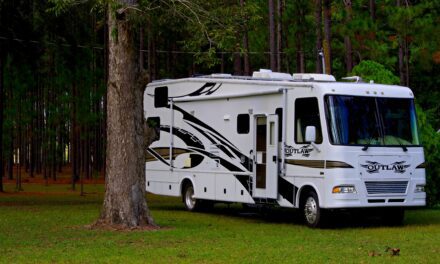If you’re a fan of the show Storage Wars, you might assume that storage units are meant to be messy, cluttered, and filled with mysterious, unlabeled boxes. In truth, however, you’ll get a lot more from your storage experience if you make the effort to effectively organize your self-storage unit. The foundation of a well-organized storage unit begins with creating and maintaining an accurate storage unit inventory.
Why You Absolutely Need a Self-Storage Inventory
Think of a storage unit inventory as your personal roadmap to everything you’ve tucked away in your unit. In its simplest form, an inventory is a list or record of all the items in your unit, along with information about where they’re located.
Whether you’re storing a few seasonal decorations or running a business out of your unit, this organizational tool is your secret weapon for finding what you need quickly. Here’s why storage and inventory management are a must for anyone renting a storage unit:
- Save time and frustration: Knowing where every item is inside your storage unit means you won’t have to spend an afternoon digging through boxes or moving items around just to find your winter coats.
- Plan for your space: By knowing what you are storing (or plan to store), you can arrange your items and shelving units to make the most of your storage unit space.
- Avoid buying duplicates: Do you already have a giant inflatable snowman for the holiday season? Check your inventory list to find out before making a duplicate purchase.
- Protect your investments: Keep track of your valuable items to make sure nothing gets damaged or forgotten.
- File insurance claims: If the unexpected happens, your detailed inventory makes filing claims easier.
- Reduce stress: Enjoy the undeniable feeling of accomplishment that comes with knowing exactly where everything is in your storage unit. That peace of mind is especially welcomed during stressful life transitions.
The bottom line? A well-organized inventory system transforms your storage unit from a mysterious black hole into a well-oiled extension of your home or business.
Step 1: Choose Your Inventory Method
How will you track your storage unit inventory? The good news is that there’s no “wrong” way to do this. It’s all about finding out what works best for you.
For some, this means the classic pen-and-paper approach. A simple notebook or printed spreadsheet lets you jot down items as you pack them. It’s reliable and doesn’t need wifi.
If you’d rather keep a digital copy of your self-storage inventory, you can always create a simple document on your phone or computer using apps like Google Sheets, Excel, or Apple Notes. These options are great because you can access them anywhere and easily search for specific items.
Tech-savvy organizers may want to opt for a dedicated inventory app, which offers even more capabilities. Some of the more popular apps include:
Step 2: Gather Your Supplies to Organize Your Self-Storage Unit
Organizing your storage unit goes hand in hand with creating a self-storage inventory. Ideally, you’ll want to do these two tasks together when you first begin filling your storage unit. Not to worry if you’ve had your storage unit for a while. You can always go in and organize your existing belongings as you create your inventory.
Either way, you’ll need the right supplies to effectively organize your self-storage unit.
Packing and Organizational Supplies:
- Clear plastic bins
- Sturdy cardboard boxes in various sizes
- Packing tape and a tape dispenser
- Bubble wrap and packing paper
- Furniture covers or tarps
Labeling Supplies
- Permanent markers in different colors
- Pre-printed labels or a label maker
- Colored stickers or tap for color-coding systems
- Notebook or clipboard
- Phone with camera
Other
- Flashlight or headlamp
- Measuring tape
- Hand truck or dolly
- Work gloves
Step 3: Sort, Declutter, and Categorize Everything
Now that you’re armed and ready to organize, it’s time to make the magic happen. In this step, you’ll sort through all your storage belongings to make sure you’re only storing items that truly belong in your unit.
Start with a big sort. Create three piles:
- Keep
- Donate/Sell
- Toss
Be honest with yourself. If you haven’t used something in two years, it’s probably time to let it go. This decluttering process will save you money on storage space and simplify your self-storage inventory.
Once you’ve completed the big sort, begin grouping the items you plan to keep into a similar group. Popular categories include:
- Seasonal items
- Household goods
- Documents and memories
- Business supplies
- Sports and hobby equipment
- Furniture and large items
Step 4: The Inventory Process: Pack, Label, and Document
Decluttering your storage unit is a big job, but it’s well worth the effort, especially now that you’re ready to create your storage unit inventory. This step may feel tedious at first, but trust the process! A well-executed self-storage inventory system will save you countless hours down the road.
Pack Smart
Begin packing your clear bins and sturdy boxes in a strategic manner. Pack heavier items in smaller containers and fill boxes completely to prevent crushing. As you pack each container, jot down a rough list of contents immediately.
Label
Label every box with a clear, descriptive title and a unique number or code. For example: “Box 1 – Kitchen Appliances.” Use your colored stickers or tape to label each box with its corresponding category. Place your labels on multiple sides of the box so you can always see them, regardless of how the box is stacked.
Document
Using your chosen storage and inventory method, record each container’s code, content, and category. Take photos of valuable items and note their condition. For extra credit, consider adding an estimated value for your items and the date you stored them. This will be your master inventory list for your storage unit.
Step 5: Maintain Your Inventory System
A storage unit inventory is only useful if it’s accurate. Creating your inventory is the first step to organizing your storage unit, but you can’t stop there. Make sure you update your inventory every time you add or remove items from your unit.
To do this, you’ll need to make your inventory method easily accessible. That means keeping your inventory notebook in your car or keeping your chosen inventory app on your phone.
Finally, back up your records, whether you’re using a digital app or handwritten notes. Take photos of written inventories, sync digital files to the cloud, or email yourself a copy of your list. You don’t want to lose all your hard work because you misplaced your notebook or your phone crashed.
Take Control of Your Storage Today
You now have all the tools and knowledge you need to create an effective storage unit inventory. Now all you have to do is implement the steps in this article to set yourself up for storage success.
Remember, a well-organized self storage inventory isn’t just about knowing where things are. It’s also about reducing stress, protecting your belongings, and giving yourself peace of mind.
Ready to organize your self-storage unit? Price Self StorageⓇ makes it easy with clean, secure facilities throughout California. We offer convenient hours, storage units in many sizes, and free courtesy carts so you can rearrange your unit as needed.
Find your nearest Price Self Storage location today.









